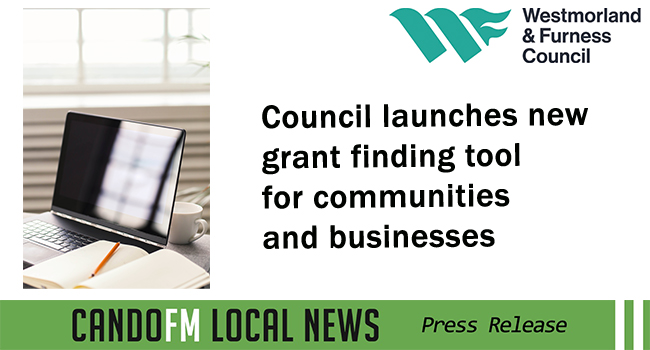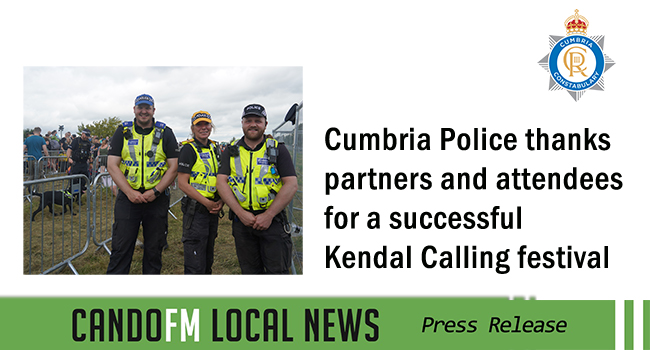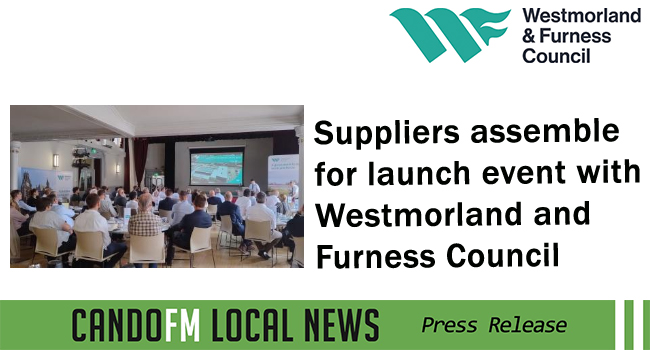At a meeting of Cabinet today (Tuesday 23 January), members agreed a new Carbon Management Strategy for 2024-2029 as well as the second and final part of the council’s ambitious new climate action plan.
These plans outline the direction and intention of the council to address climate change, provide leadership in the drive to become carbon net zero, and create a greener, healthier, more resilient Westmorland and Furness.
The Carbon Management Strategy sets out the total greenhouse gas (GHG) emissions of the council’s operations and the services it delivers. The total emissions reported by the council is 84,551 tonnes of carbon dioxide equivalent (tCO2e), with buildings, transport, and supply chain making up the main sources of emissions.
To address these core areas of emissions, four delivery strategies are being developed: buildings, transport, supply chain, and residual emissions. Measures identified to mitigate these emissions include building improvements, energy reduction, engagement with suppliers, and investment in renewable energy.
In order to reach a net zero position for the council’s Scope 1 and 2 emissions by 2037, it is estimated that a total capital expenditure of approximately £26m is required, which equates to just over £2m annually. With Scope 3 emissions outside of the council’s direct control and influence, in order to align to the Government’s Net Zero target for the UK by 2050, the council will be working closely with partners, businesses and others towards the ambition of net zero for the area.
Westmorland and Furness Council is one of only a small number of local authorities in the country to undertake such an extensive piece of work, measuring not only direct emissions but also indirect emissions for the whole council.
This work is complemented by Part Two of the council’s Climate Action Plan which identifies suitable actions the council can take across the organisation to reduce emissions, reduce environmental inequalities and create a climate positive council culture, building on the council’s ‘ecologically aware’ value. This includes how it can work with others to make changes and collaborate with partners such as Cumbria Action for Sustainability (CAfS), the Zero Carbon Cumbria Partnership (ZCCP) and town and parish councils to deliver net zero across Westmorland and Furness.
The Climate Action Plan is a five-year plan which will be reviewed regularly and updated annually, with the council focusing its actions on six categories, identifying that a holistic approach is needed to tackle climate change and achieve net zero:
- The way we live
- The way we work
- The way we produce energy
- The way we protect and enhance nature
- The way we use things
- The way we travel
Councillor Giles Archibald, Cabinet Member for Climate and Biodiversity, said:
“Today’s agreement on both Part Two of our Climate Action Plan and our Carbon Management Strategy is another milestone for our council and for Westmorland and Furness. As a council, we are making climate change a high priority and they signify our dedication to combatting climate change and providing leadership in the drive to become carbon net zero.
“These pieces of work are an important step in outlining how we as a council can work to achieve this while delivering our essential services and meeting our Council Plan priorities. Climate change remains the challenge of our generation and we recognise that in order to address it, it will require collaboration and cooperation from all stakeholders. My thanks to our partners for their input into the action plan and all those who took the time to engage with our climate conversation events.
“The plans will enhance the work we are already doing, and much hard work lies ahead, but I am heartened that if we all work together to address climate change, we can deliver net zero for Westmorland and Furness and enable it to be a great place to live, work and thrive.”
Councillor Peter Thornton, Cabinet Member for Highways and Assets, said:
“I welcome Cabinet’s decision today to agree to both the Carbon Management Strategy and Part Two of the Climate Action Plan. Both are comprehensive and important pieces of work which have involved a lot of hard work and make significant steps forward for the council. I’d like to thank all the staff involved.
“Reducing our carbon footprint is a priority for the council and by taking into account our Scope 3 emissions as well as Scope 1 and 2, it allows us to develop a deeper understanding of our carbon footprint, how we can reduce it and how we can influence others to act too.
“We already have a number of projects in the pipeline to help us achieve this ambition including the construction of a 2MW solar farm site in Barrow due to commence in the Spring. The site will generate green electricity and bring about reductions in carbon for the council resulting in expected savings of around 607 tonnes of carbon dioxide equivalent per annum.”







